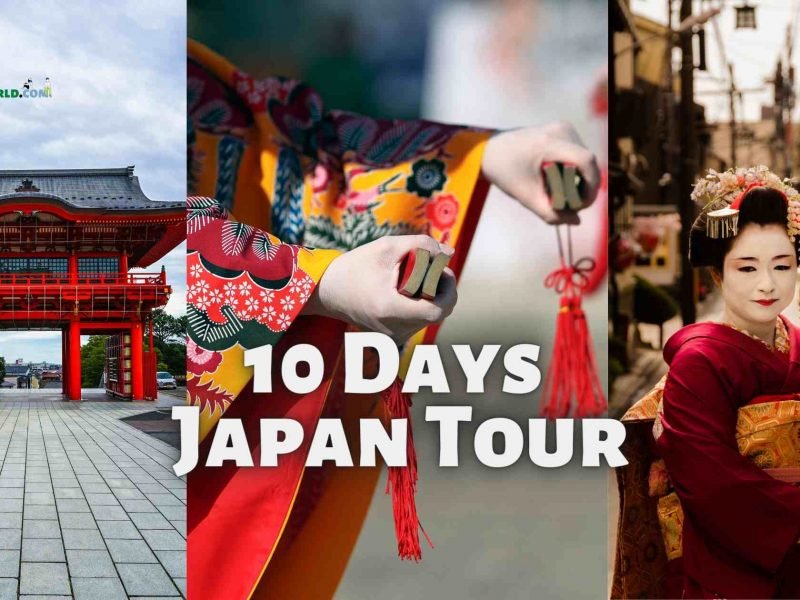About Atsuta Shrine
Shinto worship is practiced at the Atsuta Shrine, which may be found in the Atsuta-ku neighborhood of Nagoya, Japan. It has a history that goes back more than 1,900 years, making it one of the most prominent shrines in Japan as well as one of the oldest. The sacred sword Kusanagi-no-Tsurugi, one of the three Imperial Regalia of Japan, is kept in the shrine that is dedicated to Atsuta-no-Ookami, a deity linked with agriculture and industry. In addition, the shrine is dedicated to the deity Atsuta-no-Ookami.
The complex of the shrine encompasses an area of more than 200,000 square meters and is comprised of a number of structures, gates, and gardens. The honden, also known as the main hall, has been deemed a National Treasure of Japan. It was constructed in the irimoya-zukuri style, which features a gabled roof, a central hall, and two smaller halls on either side of it.
Every year, millions of people go to Japan to pay their respects at the Atsuta Shrine, which serves as a significant religious and cultural landmark in the country. Because it is supposed to bestow favors in various spheres, the shrine is especially popular with tourists who are looking to improve their fortune or further their careers. The shrine also serves as the location for a number of other celebrations and events all throughout the year. One of the most notable of these is the Atsuta Matsuri, which takes place every year in June and is regarded as one of the most important festivals in the area.
History timeline of Atsuta Shrine
Atsuta Shrine is a Shinto shrine located in Atsuta-ku, Nagoya, Japan. It is one of the oldest and most important shrines in Japan, and is home to the sacred sword Kusanagi-no-Tsurugi, one of the three Imperial Regalia of Japan. Here is a timeline of the major events in the history of Atsuta Shrine:
- 113 AD: According to legend, Atsuta Shrine was founded in this year by the legendary hero Yamato Takeru.
- 4th century: The shrine is mentioned in the Kojiki, a historical record of ancient Japan.
- 711: The shrine is given official recognition by the imperial court.
- 765: The shrine is destroyed by a fire.
- 1001: The shrine is rebuilt with the support of Emperor Ichijō.
- 1554: The shrine is again destroyed by a fire.
- 1575: The shrine is rebuilt by Tokugawa Ieyasu, the founder of the Tokugawa shogunate.
- 1868: Atsuta Shrine becomes a government shrine under the newly-formed Meiji government.
- 1895: The shrine is designated a National Treasure of Japan.
- 1945: The shrine is damaged during the bombing of Nagoya in World War II.
- 1955: The shrine is restored to its pre-war condition.
- 2013: The shrine celebrates its 1,900th anniversary.
Today, Atsuta Shrine remains an important cultural and religious site in Japan, attracting millions of visitors each year. It is also the site of numerous festivals and events throughout the year, including the annual Atsuta Matsuri, which takes place in June.
How to reach Atsuta Shrine
Atsuta Shrine is located in Atsuta-ku, Nagoya, Japan, and can be easily reached by public transportation. Here are some ways to get to the shrine:
- Train: Take the Meitetsu Line and get off at Jingumae Station. Atsuta Shrine is about a 5-10 minute walk from the station.
- Subway: Take the Meijo Line and get off at Jingu Nishi Station. Atsuta Shrine is about a 5-10 minute walk from the station.
- Bus: Take the Meitetsu Bus or Nagoya City Bus and get off at Atsuta Jinja Mae Bus Stop. The shrine is right in front of the bus stop.
- Taxi or Car: Atsuta Shrine has a parking lot for cars, but it can get crowded during peak times. Taxis are also readily available in the area.
The address of Atsuta Shrine is 1-1-1 Jingu, Atsuta-ku, Nagoya, Aichi Prefecture 456-8585, Japan. It is open daily from 5:00am to 6:00pm (hours may vary on holidays). Admission to the shrine is free, although there may be fees for certain events or attractions within the shrine complex.
Do's and Dont's at Atsuta Shrine
When visiting Atsuta Shrine, it’s important to be respectful of the shrine and its traditions. Here are some do’s and don’ts to keep in mind:
Do’s:
- Bow slightly when entering and leaving the shrine to show respect.
- Wash your hands and mouth at the chozuya (water basin) before approaching the main hall.
- Make an offering of money (a few coins is sufficient) at the temizuya (water basin) before approaching the main hall.
- Take your shoes off before entering the main hall or any other buildings.
- Take photos and enjoy the scenery, but be mindful of other visitors and avoid using flash photography inside the buildings.
Don’ts:
- Don’t take food or drinks inside the main hall or any other buildings.
- Don’t touch or remove any items inside the buildings, including the offerings and decorations.
- Don’t smoke inside the shrine complex.
- Don’t litter or leave trash inside the shrine complex.
- Don’t walk in the middle of the path leading to the main hall, as this is reserved for the deities.
By following these guidelines, you can show your respect for the shrine and its traditions, and have a more enjoyable and meaningful experience.
Highlights of Atsuta Shrine
Atsuta Shrine is a significant and historic shrine in Japan, and there are several highlights that visitors should not miss. Here are some of the most notable attractions within the shrine complex:
- The Main Hall: The honden or main hall of Atsuta Shrine is a National Treasure of Japan, and is a beautiful example of the irimoya-zukuri architectural style. The hall is surrounded by a picturesque garden and is said to house the Kusanagi-no-Tsurugi, one of Japan’s three imperial regalia.
- Treasure Hall: The Atsuta Shrine Treasure Hall is home to many priceless treasures, including swords, mirrors, and other important items from Japanese history. Visitors can see many of these treasures on display, as well as learn about their significance and history.
- Goshuincho: Visitors can purchase a goshuincho, or shrine stamp book, at the Atsuta Shrine office. The book contains blank pages for collecting stamps and calligraphy from different shrines and temples in Japan. At Atsuta Shrine, visitors can receive a unique stamp and calligraphy for a fee.
- Festivals and Events: Atsuta Shrine hosts several festivals and events throughout the year, including the Atsuta Matsuri in June, one of the largest festivals in the region. Other events include traditional dances, martial arts demonstrations, and music performances.
- Surrounding Area: The shrine complex is located in a beautiful park-like setting, with several walking paths and gardens to explore. The area is also home to several other historic sites, including the Atsuta Jingu Museum and the Nagoya Castle.
These are just a few of the many highlights of Atsuta Shrine, and there is much more to see and experience at this important and historic site.
Also, read – Important to know about Itsukushima
Frequently asked questions about Atsuta Shrine ?
What is the history of Atsuta Shrine?
What is the Kusanagi-no-Tsurugi?
What is the admission fee for Atsuta Shrine?
What is the best time to visit Atsuta Shrine?
Can I take photos at Atsuta Shrine?
What is opening and closing time of Atsuta Shrine ?







Comment (0)